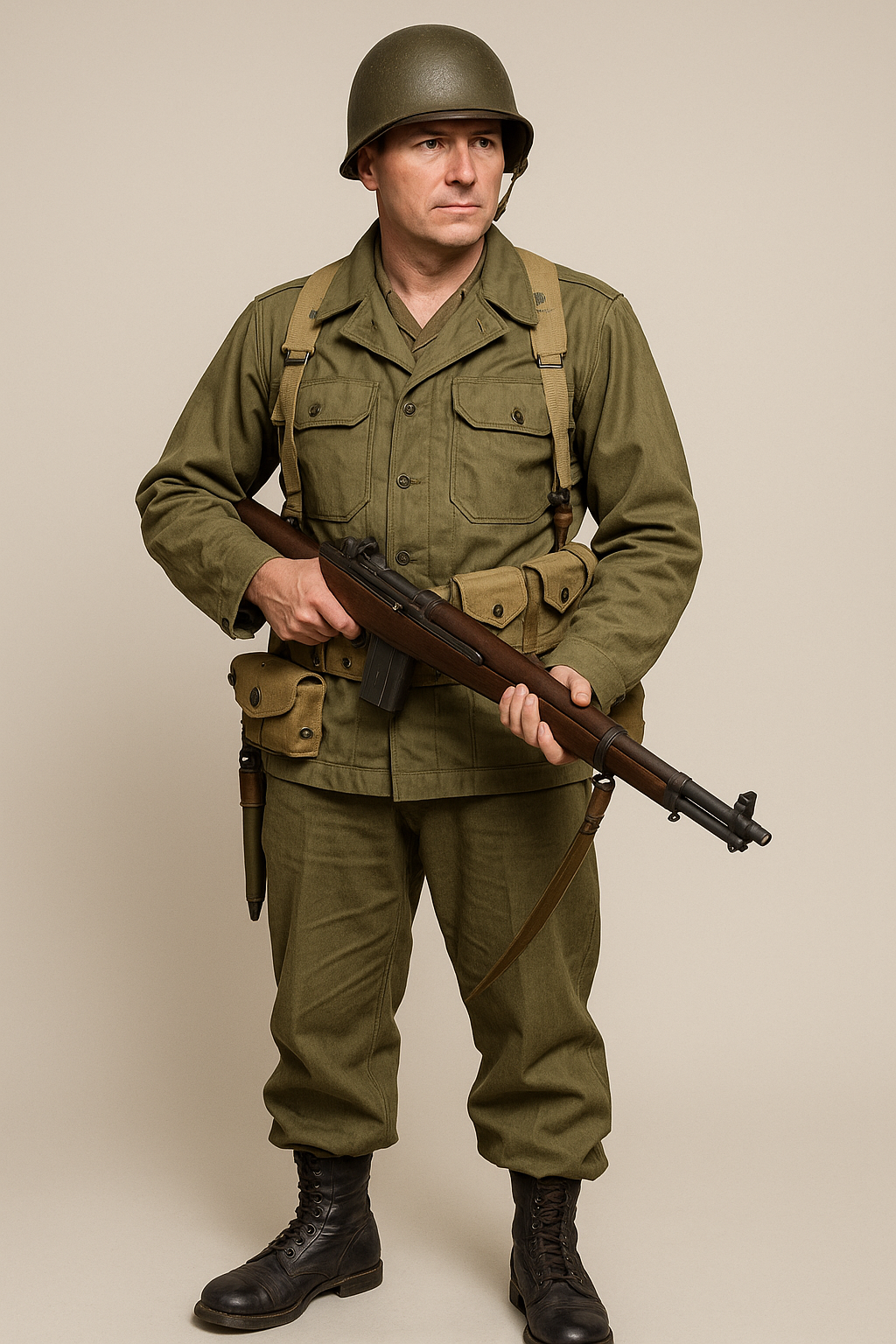
Korean War Uniforms: A Collector’s Guide with Insights into WWI and WWII US Uniforms
Published on Sep 20, 2025
Introduction: Did You Know?
Over 5.7 million Americans served during the Korean War — yet most history buffs know far more about World War I and II uniforms than what soldiers wore during this "Forgotten War."
If you’re a collector or enthusiast of World War 1 uniforms United States, understanding Korean War uniforms will not only broaden your historical knowledge but also help you find valuable pieces that many overlook.
Let’s break down what makes Korean War uniforms unique, how they evolved from WWI and WWII styles, and how you can start collecting or preserving them today — without falling into common traps.
H2: How Korean War Uniforms Evolved from WWI and WWII Styles
Intents: Informational 50%, Commercial 50% World War 1 uniforms, United States
The uniforms worn during the Korean War (1950–1953) reflected rapid evolution in military gear — blending aspects of WWI, WWII, and modern warfare.
WWI Origins (1914–1918):
- Material: Wool, in olive drab.
- Key Components: M1912 tunic, breeches, and hobnailed boots.
- Helmet: M1917 “Brodie” helmet (a British-inspired design).
- Use in Korea? Rare, but early reservists may have worn surplus gear.
- Related term: US WWI uniform, United States Army uniforms WW1
WWII Influence (1939–1945):
- Upgrades: Better boots, M1943 field jacket, layered uniforms.
- Helmet evolution: The iconic M1 steel helmet became the standard.
- Field Gear: Canvas belts, shovel carriers, ammo pouches.
- Carried into Korea almost unchanged — especially early in the conflict.
- Related term: World War II American uniforms
Korean War Innovations:
- Introduction of M1951 Field Jacket – a cold-weather marvel.
- Layered clothing systems to combat Korea’s brutal winters.
- Fatigue uniforms with better mobility.
- Combat boots adapted for cold and mountainous terrain.
Takeaway: Korean War uniforms didn’t appear out of nowhere — they evolved directly from WWI American uniform innovations and WWII refinements.
H2: Actionable Steps for Beginners Looking to Collect Korean War Uniforms
Intents: Informational 50%, Commercial 50% World War 1 uniforms, United States
Interested in collecting? Here’s how to start without being overwhelmed:
1. Learn to Spot Key Features
- Check for tags: M1951, OG-107, or Quartermaster markings.
- Look at the lining: Korean War coats were often lined for insulation.
- Buttons matter: Plastic vs. brass can help identify production period.
2. Start with Affordable Pieces
- Helmets and field jackets are often cheaper than full dress uniforms.
- Focus on US enlisted men’s gear first — it’s more widely available.
3. Authenticate Before You Buy
- Reproductions are everywhere.
- Use online forums, militaria experts, or comparison photos.
- Beware of sellers labeling WWII gear as “Korean War” due to crossover.
4. Attend Militaria Shows
- Best place to handle real items.
- Meet experienced collectors.
- Get better deals than on eBay or Etsy.
5. Document Everything
- Keep receipts and provenance.
- Label items with date, branch, and any unique marks.
H2: Common Pitfalls in Collecting Korean and WWI/WWII US Uniforms
Intents: Informational 54%, Commercial 46% ww1 american uniform
Even experienced collectors fall for these traps:
1. Confusing Era-Specific Features
- The M1 helmet was used in both WWII and Korea. Look inside: WWII liners differ from Korean War versions.
- OG-107 fatigue uniforms began in Korea but continued through Vietnam.
2. Buying Without Research
- Many assume older = more valuable. Not always true.
- Korean War items can sometimes be rarer than WWI gear due to shorter production runs.
3. Improper Storage
- Wool moth damage is common.
- Cold-weather gear can mold in humid conditions.
Pro Tip: Store uniforms in breathable garment bags with cedar blocks — not plastic!
H2: Current Trends in Korean War and Early U.S. Military Uniform Collecting
1. Rise in Korean War Interest
- As WWI and WWII items become scarce or expensive, collectors are shifting to Korean War pieces.
- More documentaries and books are boosting awareness.
2. Focus on Complete Kits
- Full gear sets (helmet, jacket, webbing, etc.) command higher prices.
- Collectors seek authenticity and completeness.
3. Tech + History: Virtual Displays
- Some enthusiasts use 3D scanning to preserve and showcase gear.
- Digital militaria museums are emerging.
H2: Where to Buy or Sell Korean War & US WWI Uniforms Today
Intents: Informational 50%, Commercial 50% World War 1 uniforms, United States
Here are trusted marketplaces for military uniform collectors:
PlatformBest ForNotes
eBay Wide variety Beware of fakes
Etsy Vintage-style pieces , More reproductions
Gun Shows Gear + personal stories Regional availability
Militaria Dealers Authentic pieces Higher prices, but vetted
Online Forums (like US Militaria Forum) , Peer-reviewed insights , Good for asking questions and ID help
Conclusion: Your First Uniform is the Start of a Bigger Journey
From the us WWII uniform to the cutting-edge cold-weather gear of Korea, American military uniforms tell stories of innovation, hardship, and service.
Whether you're a collector, a history teacher, or simply curious, starting your journey with Korean War uniforms opens a lesser-known but deeply fascinating chapter of 20th-century military history.
